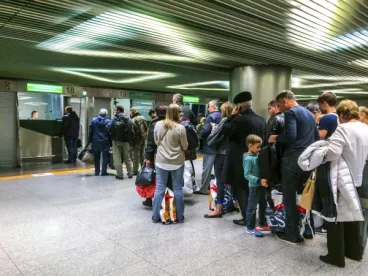USCIS is starting the year with a growing backlog of processing delays.
In May 2019, a bi-partisan group of Senators wrote to USCIS requesting information on why the service-oriented agency adjudicating immigration benefits, such as work authorization, is disrupting American businesses through administrative inefficiencies.
Here are some of the facts:
-
For FY 2018, the gross backlog at USCIS reached 5,591,839, representing a 69% increase since 2014 and a 29% increase since 2016;
-
Case completion per hour rates declined for 81% of benefit types between FY 2016 and FY 2018; and
-
Case completion rates for Form I-129 petitions dropped from 0.97 per hour to 0.64 per hour.
This translates into the following processing times (for non-premium processed cases) averaged across USCIS Service Centers as of September 30, 2019:
Nonimmigrant Visa Petition (I-129) 3.7 months
Application for Advance Parole (initial) 4.5 months
Application for Advance Parole (renewal) 10.3 months
Immigrant Visa Petition (I-140) 5.3 months
Employment-Based Adjustment (I-485) 9.5 months
Extend/Change Nonimmigrant Status (I-539) 4 months
Employment Authorization (I-765) 4.5 months
Naturalization (I-400) 9.9 months
Waivers (excluding I-601A) 31.6 months
Some of the Administration’s new policies that have led to these increased processing times include the dramatic increase in Requests for Evidence (now at least 60% for H-1B cases alone), increased length and complexity of forms, increased security checks, and the I-485 in-person interview requirement for all employment-based petitions. If the new Public Charge rule goes into effect, it is expected to further increase processing times overall because of the complex calculations that will be required.
At the end of May 2019, the Government Accountability Office (GAO) agreed to analyze the USCIS backlog. At that time, the GAO said that it would take at least five months to gather a team to do this work.




 />i
/>i

